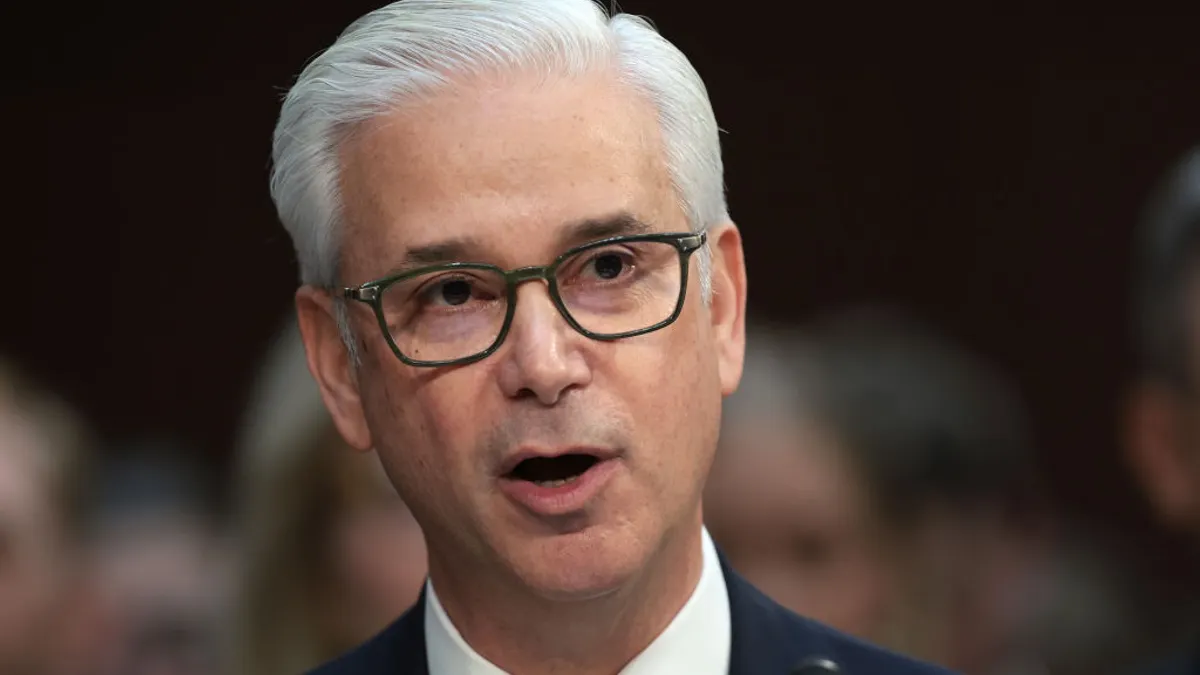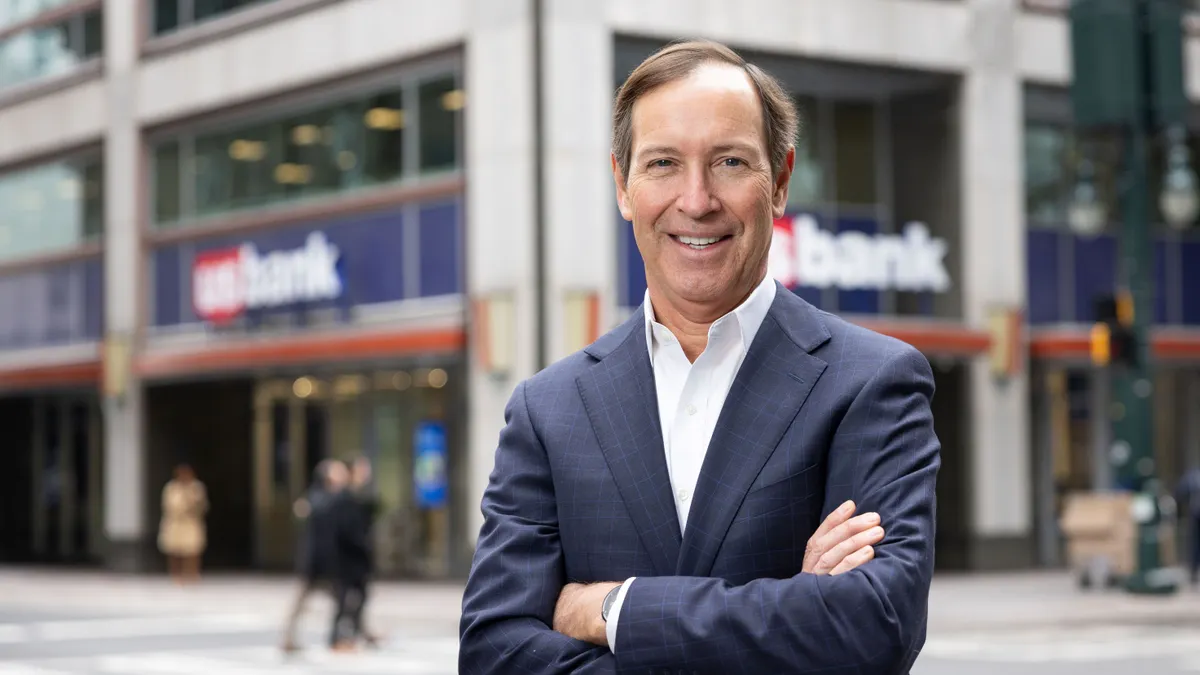Wells Fargo CEO Charlie Scharf expressed confidence Wednesday that the bank is inching closer to the point it will be freed from the $1.95 trillion asset cap it’s operated under for seven years.
Just two consent orders remain for Wells, including the growth constraint imposed by the Federal Reserve in 2018. Scharf, speaking Wednesday at a Bernstein conference, seemed to suggest the cap will be lifted sooner than later.
“Our level of confidence in terms of where we are and how far we are down that road is extremely high,” Scharf said. “We’re not done, but we’re a hell of a lot closer to the end than the beginning, at this point.”
There’s been plenty of speculation that 2025 will be the year Wells is freed from the growth restriction. Analyst Ken Usdin noted the bank is “closer and closer to emerging from what's been a very inward-focused period of time for the company,” as it’s overhauled risk management and internal controls to satisfy its various regulatory orders.
The regulatory clampdown followed a scandal in which employees of the San Francisco-based lender opened millions of fake customer accounts to hit sales targets.
Wells is spending about $2 billion annually on its risk and control agenda, and has simplified its business, exiting some areas with lower returns or lackluster growth rates. The bank has also brought in a number of fresh faces – 150 of the bank’s top 220 people are new – establishing the “proper risk mindset” at the company, Scharf said.
Six consent orders have been cleared this year, and 12 since 2019, when Scharf became CEO. Lifting the asset cap and the ultimate consent order are two different decision points for the Fed, and Scharf said he couldn’t speak for the central bank’s timing. He noted, though, that most of the work completed for other now-closed consent orders is “foundational” to those that remain.
“Those are just very good proof points for you all to say we’re much closer to that order being lifted than…something other than that,” the CEO said. “We feel very, very confident that it’s going to get lifted.”
With the removal of that limitation on the horizon, the bank is preparing to pounce on growth in its retail deposits business. Given the fake-accounts scandal, sales practices were “front and center” among the bank’s issues, Scharf said, so the bank had to “literally scale back almost everything that we were doing to drive growth in the retail system, and then rebuild it from the bottom up.”
During a multiyear period, the bank “didn’t have branch [profits and losses], we didn’t have sales reporting, we weren’t focused on expanding the product set, improving the digital capabilities, because we were so focused on creating the right infrastructure to satisfy the regulators – appropriately so – so that they and we could be comfortable, when we turn these things back on, that we could grow properly,” he said.
The closure of the sales practices consent order “was a hugely important point,” revealing regulators’ comfort level, allowing Wells to re-create an environment where the bank can focus on doing more for customers, he said.
Wells is particularly focused on primary checking account growth, Scharf said.
“We worked really hard to try and preserve share before; now the focus has gone to, what do we have to do to increase share?” he said.
To do that, the bank has changed compensation plans and introduced reporting; simplified its product set and segmented it to serve more and less affluent customers; is spending “significantly more” on marketing; and is focused on improving its branch experience while bolstering digital capabilities, he said.
Each of the bank’s segments – consumer and small-business banking, consumer lending, wealth management, commercial banking and corporate and investment banking – “should be growing faster than they’re growing today and have higher returns,” Scharf said.
When the asset cap is eventually lifted, “there’s no light switch” related to the bank’s growth trajectory, he said.
But “it does lift a cloud that exists around Wells,” as the cap has limited the bank, both tangibly and in mindset. The bank has been constrained in its ability to take commercial deposits, for example, and its corporate and investment bank growth has been limited.
“The scarlet letter goes away, and we’re not differentiated from the other companies out there,” and bankers can think more aggressively, Scharf added.
A caveat on his growth and earnings assertion: He stressed that the bank is exercising caution with home lending, “where you can chase short-term returns and chase growth and it can turn out very, very badly for you in the future,” and is more focused on building it as a relationship product; and with auto lending, “where we’re focused on returns, not growth.”
Scharf also noted the asset cap isn’t a constraint on loan growth, because the demand isn’t there and hasn’t been for several years.
“When you look at all of the lending that’s being done outside of the banking system, why do banks not see the demand, but there’s this huge demand that exists outside?” he said, pointing to the growth of private credit, which has ballooned to a $1.6 trillion industry.
“That is an interesting question, which we also think the regulators need to look at, in terms of what is driving that?” Scharf said.





















